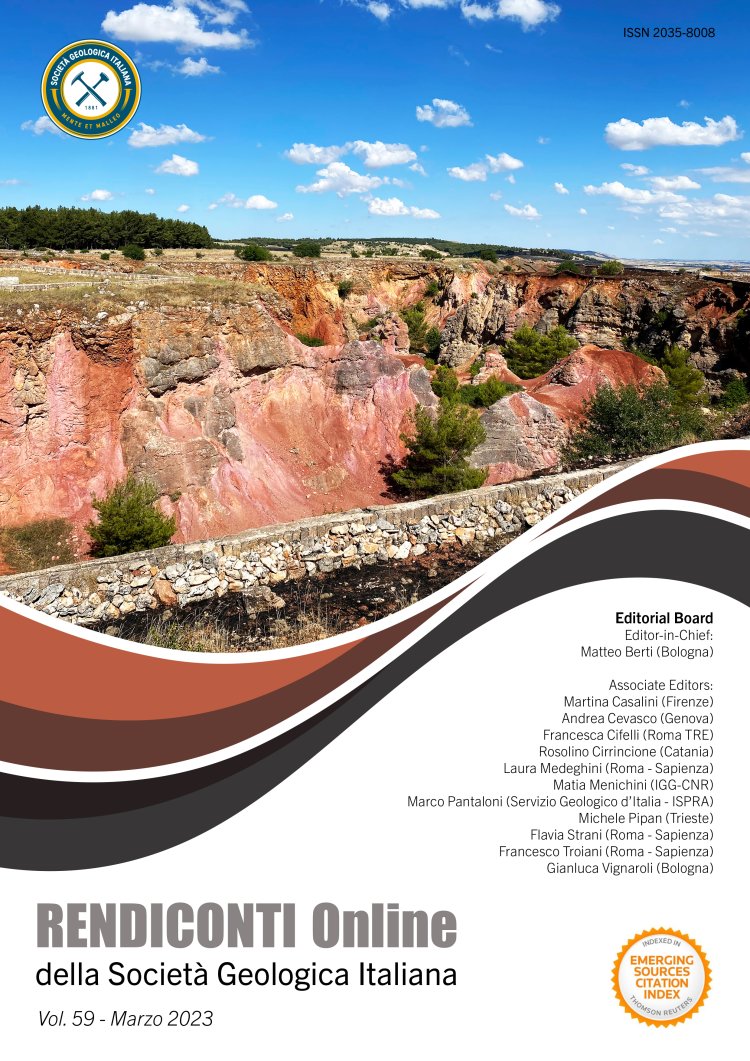
Sandstone petrology of the Crotone Basin, Calabria (Italy) from well cores
Sara Criniti1, Mario Borrelli1,2, Ettore Falsetta1, Massimo Civitelli1, Elena Pugliese2 & Nicodemo Arcuri2
1Dipartimento di Ingegneria dell'Ambiente, Università della Calabria, 87036 Arcavacata di Rende (CS), Italy.
2Dipartimento di Biologia, Ecologia e Scienze della Terra, Università della Calabria, 87036 Arcavacata di Rende (CS), Italy.
Corresponding author e-mail: ettore.falsetta@unical.it
DOI: https://doi.org/10.3301/ROL.2023.10
Volume: 59/2023
Pages: 64-70
Abstract
Siliciclastic Serravallian–Tortonian strata of the Crotone Basin, and allochthonous Paleogene siliciclastic strata (Cariati Nappe) were studied in 8 well logs, both onshore and offshore. Compositional and stratigraphical variations along transects of 60 km (N-S) and 27 km (W-E) were undertaken. Modal analysis of buried sandstones testified four distinctive sandstone petrofacies: quartzolithic and quartzofeldspathic composition related to allochthonous terranes of the Cariati Nappe, quartzofeldspathic and quartzofeldspatolithic composition related to the Crotone Basin. Sandstones composition reveals a direct influence of the nearby crystalline (plutonic and metasedimentary rocks) and associated Mesozoic to early Miocene sedimentary source areas (Sila Unit). Detrital modes are intimately related to the tectonic setting evolution of the area. Comparison with southern Apennines regional petrofacies of the Sicilide Complex, and Crotone Basin outcrop petrofacies had shown analogies with buried sandstones, as a consequence of typical setting within foreland basin system.
Keywords
Get Full Text